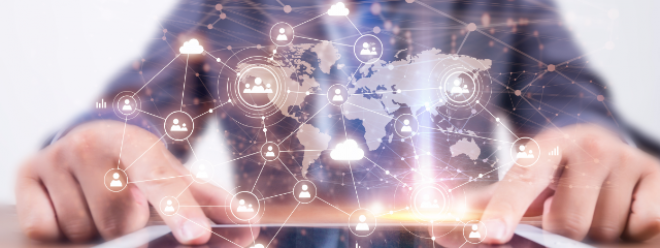How the Internet of Things will change the future of virtual reality technology

The Internet of Things (IoT) is defined as an internet-based data sharing network of connected devices, so it has great potential to enhance devices with the latest technologies such as VR (Virtual Reality) and AR (Augmented Reality). When embedded in the IoT ecosystem, VR devices can provide additional information about the application system and improve the overall user experience by increasing the scope of various customizable functions.
Furthermore, virtual reality is a simulation of reality that is created using data collected by various sensors. The data collected is fed into computer hardware and then processed by software, which helps form an environment in which the user can be immersed. To experience VR, users must wear a VR headset or helmet. Sensors that collect data are connected to each other with the help of IoT, and this is where IoT plays an important role in advancing VR technology. Immersive VR experience means that the user is completely separated from reality and only feels the VR he/she is experiencing.
Comparison of AR and VR
AR is a virtual environment that coexists with the real environment. As the name suggests, it adds extra information to ordinary objects. Its main goal is to augment the regular physical objects we see every day — unlike VR, which deals with completely different environments created by sensors. The environment created is used to perform various functions and tasks virtually. AR and VR are equally important in their respective fields, making progress in manufacturing, healthcare, automotive industry, design, and more. "
Key applications of IoT and virtual reality technology
medical insurance
Virtual reality technology has proven to be helpful in all aspects of the healthcare industry. It allows professionals to connect with each other from remote locations, and VR headsets provide a complete 3D environment to teach students.
They have also been shown to be helpful to patients, as the headphones can calm them down before surgery. This allows them to relax and prepare for surgery. It has been reported that patients undergoing physical therapy recover faster by performing physical tasks in a 3D simulated environment compared to conventional treatment.
educate
VR has helped many students with physical disabilities attend classes. Students who were unable to attend classes due to unfortunate reasons can now attend classes with ease. Virtual reality has proven to be of great help to medical students as they can now observe surgeries without any hindrance. It provides a great learning experience to the students as they can now understand the concepts through effective visualizations.
manufacturing
In manufacturing plants, AR and VR can be used together to make assembly lines more efficient and reduce cycle times. AR can indicate critical areas where lag or delay exists, and this delay can be corrected and handled to prevent it from happening again. Designing the entire system before actually building it is one of the important applications of virtual reality – specifically, checking its feasibility, dimensions and design. This will save a lot of time, money and effort.
game
VR was originally designed for immersive gaming, and it is still used for this reason. It allows users to be immersed in the game and gain a unique gaming experience. This section takes users into a completely different world and, in some cases, helps relieve stress.
Challenges in optimizing VR technology for IoT devices
VR-enabled IoT devices provide users with a visualization of the entire idea, virtually in 3D. VR in IoT has proven to be very useful in providing immersive experiences in all fields such as gaming, healthcare, manufacturing and design. This facilitates experiencing a prototype or concept and predicting how it will feel in the real world without actually building a physical version of it. However, this type of technology also has its own challenges that must be considered:
VR system design
VR video streaming consumes a lot of data as it involves a full 360-degree view. Rendering such a video requires more powerful computer resources. The constant presence of a strong Wi-Fi or cellular network is another issue that arises when streaming rendered video. A weak Wi-Fi or cellular connection will cause sudden streaming of data. Therefore, solid VR system design that enables real-time applications will lead to efficient VR system design.
User view prediction
The effectiveness of user view prediction plays a key role as the system has to predict the user's movements. The content presented determines the user dynamics. If the user responds to the content and moves, the rendered content must change accordingly. VR systems must take into account the dynamic characteristics of the user, taking into account that the user's unpredictable movements must not cause the system to fall off. If predictions are inaccurate, the quality of the experience will degrade.
Calculation requirements
The need for powerful computing is critical for real-time IoT applications. High-quality VR video requires real-time encoding/decoding and rendering of the video, which requires very high computing power. They also require additional processing time to prepare the video. Compression is a necessary component of VR systems and can reduce file sizes by an average of 90% at the expense of milliseconds of decoding latency per frame.
stream media
The size of VR content causes storage and streaming issues over limited bandwidth. This inspired the creation of rather small cache buffers, which caused significant difficulties in adaptive VR streaming design.